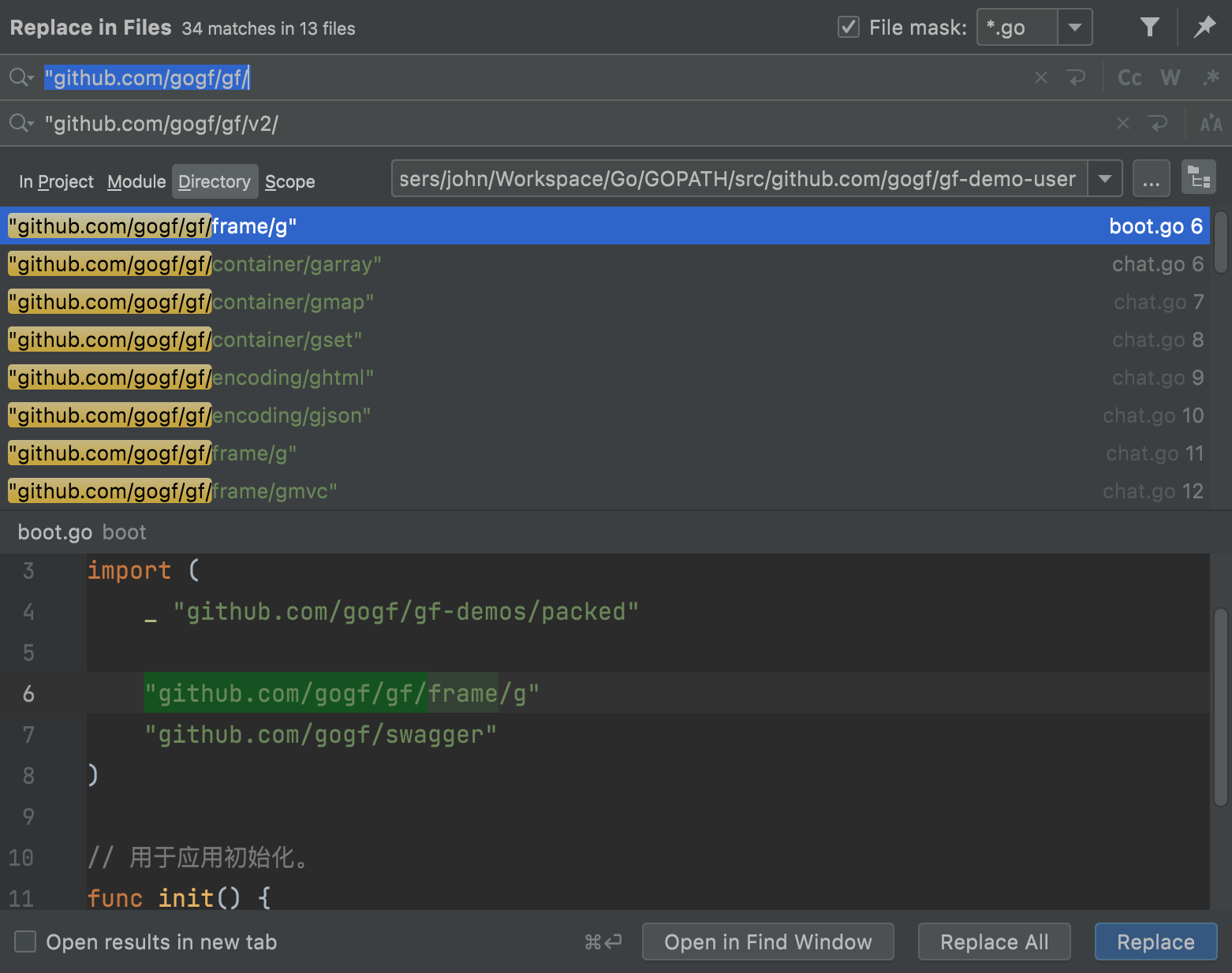Preliminary Remarks
The GoFrame framework has released version v2, marking a milestone with numerous new features and significant improvements, as well as some pioneering features.
For new users, please start directly with v2. For existing users, it's highly recommended to upgrade from v1 to v2, for greater stability and reliability.
Key points to note for the v2 upgrade:
- To ensure compatibility and in accordance with the official
Golangmodule management norms, we have changed theimportpaths, hence a global replacement ofimportpaths is required. - Given this is a major upgrade, some methods have been removed or updated, rest assured that better alternatives are provided.
- Generally, after upgrading, simply recompile and modify the code according to the compilation error messages to complete the upgrade.
- The
grediscomponent supports clustering, thus changes in configuration need attention.
We have not provided an upgrade tool as we believe that a guide is sufficient.
Compatibility Between v1 and v2
To ensure project compatibility, it is possible to simultaneously depend on both v1 and v2 versions. Therefore, we have released the last version v1.16.7 of v1, which you can upgrade to if needed. This release addresses the common issue of client_tracing.go:73:3: undefined: attribute.Any. However, depending on both versions of GoFrame might reduce project maintainability, and it's suggested to upgrade to v2 as soon as possible.
Replace Dependencies with v2
Globally replace the source code as follows:
"github.com/gogf/gf/ => "github.com/gogf/gf/v2/
Like this:

Download the Latest v2 Version
go get -u github.com/gogf/gf/v2@latest
Project Directory Adjustments
If you are using the officially recommended project directory structure of GoFrame, you can manually adjust to the latest directory structure: Project Structure🔥
Note that the latest cli tool no longer supports the creation of projects with the old directory structure.
Compilation and Running Modifications
Run your project, and if you encounter compilation problems, manually modify them according to the error messages, iterating as necessary.
If you're unsure how to modify, leave a comment on this document, and our community team will assist you with the upgrade.
Important Changes to the CLI
- The
swaggercommand has been removed. In thev1version, thegf swaggercommand automatically installed a third-partyswagtool to parse annotations in source code to generateswaggerdocuments. This method of document management and maintenance has issues: it only supports theSwagger2.0protocol, has a poor usage experience, and maintaining annotations in sync with code is difficult, leading to inconsistencies between interface documentation and code. With standard routes in the new version, this command is discarded. If you need to continue using this function, manually install the third-partyswagtool: https://github.com/swaggo/swag - The
updatecommand has been removed. Starting from versionv2, the installation and download of theCLItool are unified viagithub, reducing maintenance workload. The command may be reintroduced in the future.
Some Important Notes
- The
gf-clirepository has been moved to the maingfrepository for maintenance, ensuring tools and framework versions are in sync. The original repository is no longer maintained. For details, see: https://github.com/gogf/gf/tree/master/cmd/gf - Core framework components adopt an interface design to ensure wide applicability of interfaces, with some minor reductions in exposed methods.
- Extensive use of the
gvargeneric in core framework components enhances usability, masking specific type implementations at the lower level. For stability and usability, the framework will not consider using the officialGolanggenerics within the next2-3years. The official generics have value for modification in certain features of some framework components.